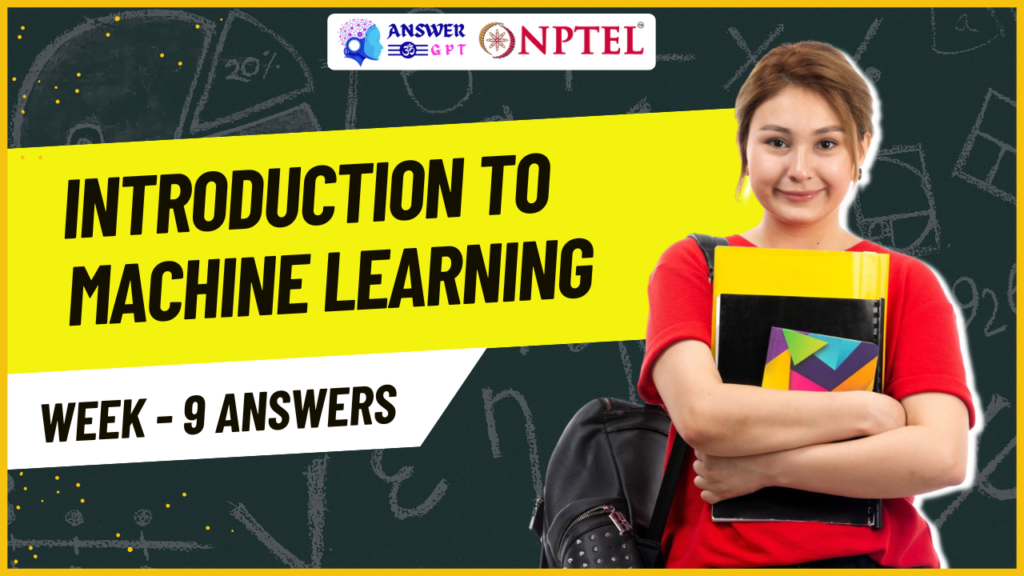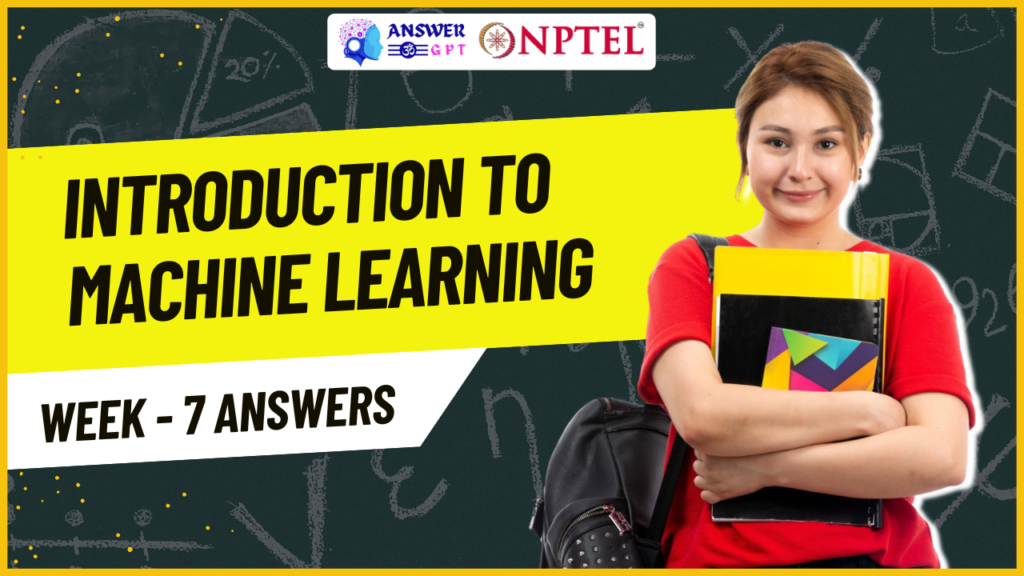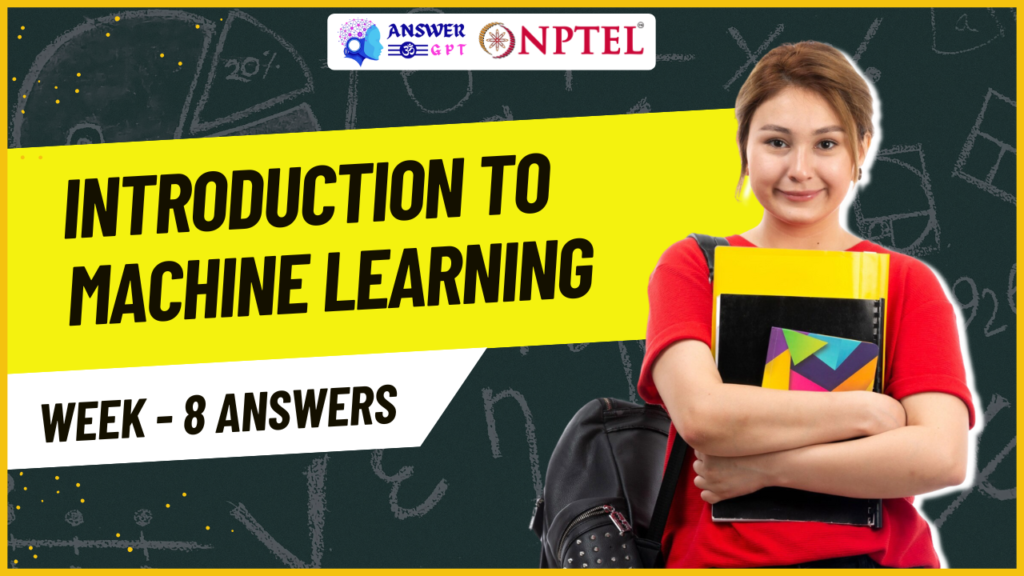Get NPTEL Machine Learning Week 9 answers at nptel.answergpt.in. Our expert-verified solutions help you understand key concepts, simplify complex topics and enhance your assignment performance with accuracy and confidence.
📌 Subject: Machine Learning
📌 Week: 9
📌 Session: NPTEL 2025
📌 Course Link: NPTEL Machine Learning
📌 Reliability: Expert-reviewed answers
We recommend using these answers as a reference to verify your solutions. For complete, detailed solutions for all weeks, visit – [Week 1-12] NPTEL Introduction to Machine Learning Assignment Answers 2025.
🚀 Stay ahead in your NPTEL journey with updated solutions every week!
| Week-by-Week NPTEL Machine Learning Assignments in One Place |
|---|
| Machine Learning Week 1 Answers |
| Machine Learning Week 2 Answers |
| Machine Learning Week 3 Answers |
| Machine Learning Week 4 Answers |
| Machine Learning Week 5 Answers |
| Machine Learning Week 6 Answers |
| Machine Learning Week 7 Answers |
| Machine Learning Week 8 Answers |
| Machine Learning Week 9 Answers |
| Machine Learning Week 10 Answers |
| Machine Learning Week 11 Answers |
| Machine Learning Week 12 Answers |
Introduction to Machine Learning Week 9 NPTEL Assignment Answers 2025
1. In the undirected graph given below, how many terms will be there in its potential function factorization?

- 7
- 3
- 5
- 9
- None of the above
Answer :- b
2. Consider the following directed graph:

Based on the d-separation rules, which of the following statements is true?
- A and C are conditionally independent given B
- A and E are conditionally independent given D
- B and E are conditionally dependent given C
- A and C are conditionally dependent given D and E
Answer :- a
3. Consider the following undirected graph:

In the undirected graph given above, which nodes are conditionally independent of each other given C? Select all that apply.
- A, E
- B, F
- A, D
- B, D
- None of the above
Answer :- e
4. Consider the following statements about Hidden Markov Models (HMMs):
I. The ”Hidden” in HMM refers to the fact that the state transition probabilities are unknown.
II. The ”Markov” property means that the current state depends only on the previous state.
III. The ”Hidden” aspect relates to the underlying state sequence that is not directly observable.
IV. The ”Markov” in HMM indicates that the model uses matrix operations for calculations
Which of the statements correctly describe the ”Hidden” and ”Markov” aspects of Hidden Markov Models?
- I and II
- I and IV
- II and III
- III and IV
Answer :- c
5. For the given graphical model, what is the optimal variable elimination order when trying to calculate P(E=e)?

- A, B, C, D
- D, C, B, A
- A, D, B, C
- D, A, C, A
Answer :- a, b, c, d
6. Consider the following statements regarding belief propagation:
I. Belief propagation is used to compute marginal probabilities in graphical models.
II. Belief propagation can be applied to both directed and undirected graphical models.
III. Belief propagation guarantees an exact solution when applied to loopy graphs.
IV. Belief propagation works by passing messages between nodes in a graph.
Which of the statements correctly describe the use of belief propagation?
- I and II
- II and III
- I, II, and IV
- I, III, and IV
- II, III, and IV
Answer :- c
7. HMMs are used for finding these. Select all that apply.
- Probability of a given observation sequence
- All possible hidden state sequences given an observation sequence
- Most probable observation sequence given the hidden states
- Most probable hidden states given the observation sequence
Answer :- a, d
Conclusion:
In this article, we have uploaded the Introduction to Machine Learning Week 9 NPTEL Assignment Answers. These expert-verified solutions are designed to help you understand key concepts, simplify complex topics, and enhance your assignment performance. Stay tuned for weekly updates and visit www.answergpt.in for the most accurate and detailed solutions.


